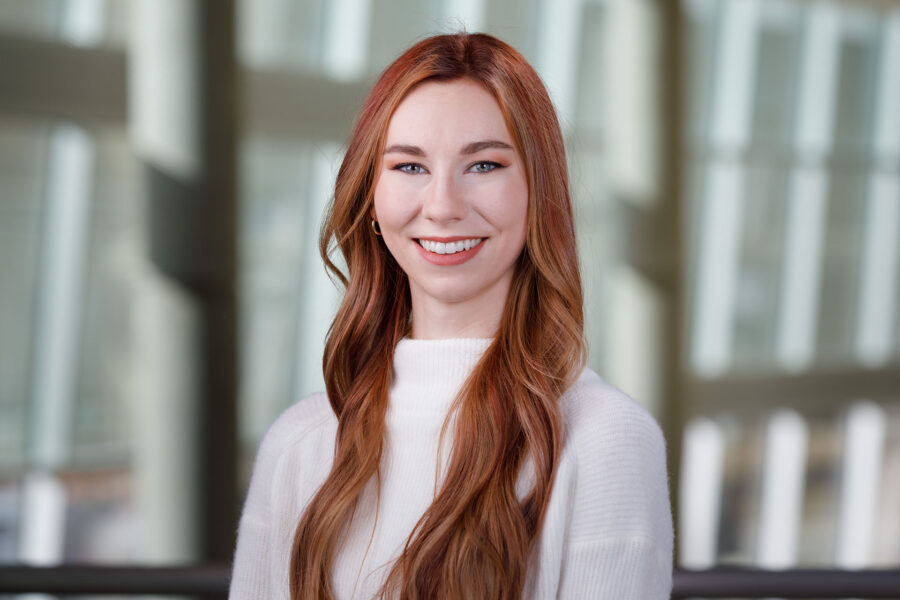Kayla Orndorff’s life has been filled with medicine and music.
Growing up with a physician father and a nurse mother, Orndorff was used to dinner table conversations about medicine and patient care – they fascinated her, she said. But everyone in her family also played an instrument – Kayla herself plays the piano and sings.
“Speech therapy is a great combination of both of those disciplines,” she said. “I can use my knowledge of anatomy and physiology, as well as my knowledge of music, to help people with their voices.”
Orndorff is a new speech-language pathologist at the Munroe-Meyer Institute whose area of expertise is voice therapy services.
Jessica Gormley, PhD, the interim director of the MMI Department of Speech-Language Pathology, said Orndorff is MMI’s only current voice therapist.
“Kayla works more with people on producing sound and phonation at the level of the vocal folds,” Dr. Gormley said. “There is a lot that can go wrong with that sound production, and Kayla has had specialized training to assist.”
Orndorff works with people who have voices disorders such as nodules, head and neck cancer after radiation or neurological conditions that affect the way the vocal muscles function. She often gets referrals from other providers.
“If patients are experiencing changes in their vocal quality or volume that are interfering with how they complete their activities of daily living, physicians can send then to me, and I can coach them through to build up that ability again.
“We’ll usually start with vocal hygiene – staying hydrated, not coughing or clearing your throat too much, not yelling or shouting if you don’t need to,” Orndorff said. “I also work on diaphragmatic breathing with people, which is a really common technique that takes the work of breathing away from the neck and shoulders and moves it down to the abdomen.”
But her “bread-and-butter” treatment, she said, is resonant voice therapy.
“Resonant voice therapy is all about how sound vibrates and resonates in the vocal tract,” she said. “The goal is to reconfigure the tract so that it’s as efficient as possible – kind of like the bell of a trumpet, where sound is being projected outward, as opposed to getting trapped somewhere in the vocal tract, getting absorbed into the tissue.”
Apart from her professionally acquired skills, Orndorff also will draw from things she learned in her own vocal journey, as a music lover and lifelong church performer.
“Because I didn’t have anyone guiding me vocally, I figured a lot out on my own,” she said. “That experience made it easier for me to work with patients – I know what they feel like, because I struggled with many of these same things. And anytime I learned something new about the voice, I would take that and experiment with it.”
Dr. Gormley likens Orndorff’s work with singers, performers and others – such as teachers or salespeople – who use their voice for a living to an athletic trainer.
“When you are training your muscles, say weightlifting, sometimes those muscles need rest or therapy,” she said. “It’s the same with the muscles that you use to speak.”
